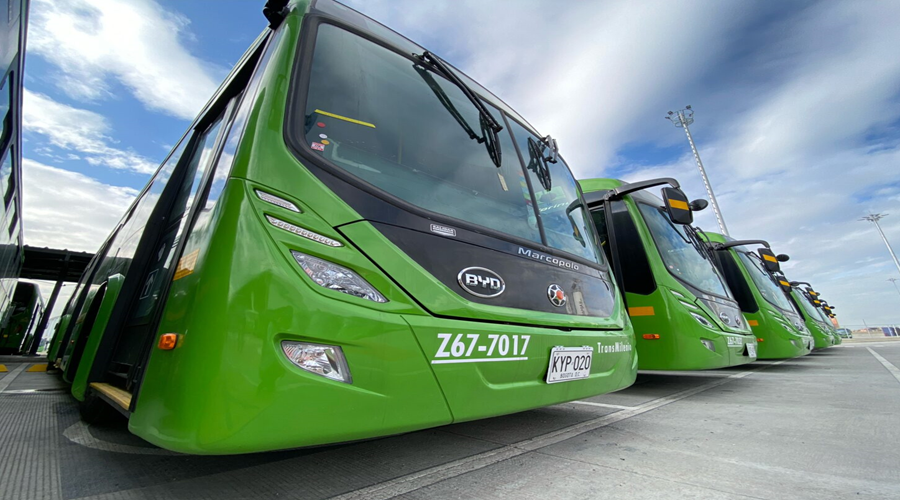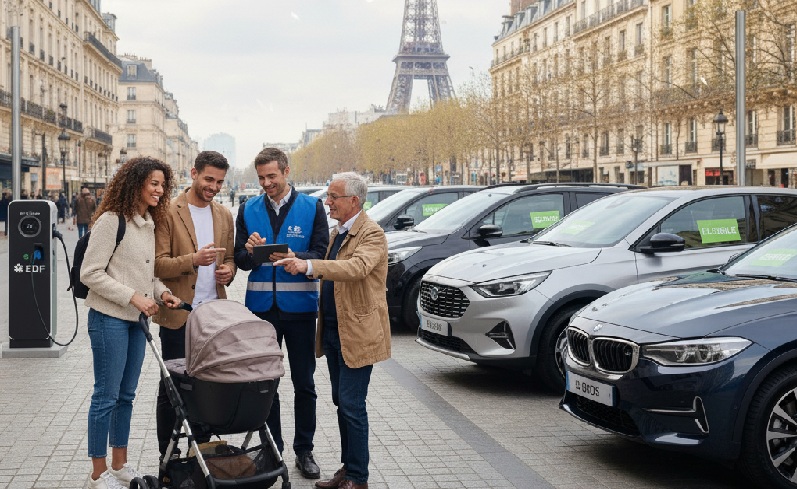In recent years, the cost gap between electric buses and ICE buses in Colombia has narrowed considerably.
Diego González, an e-mobility consultant, explained to Mobility Portal Latin America that falling battery prices and government-led tax incentives are “levelling the playing field”, making electric buses increasingly competitive with their diesel counterparts.
The question is: how is this reflected in CAPEX (capital expenditure)?
Back in 2019, the cost difference between an electric bus and an ICE bus was approximately 2.5 times.
At the time, batteries accounted for up to 40% of the total cost of electric buses, significantly driving up prices – particularly for public transport systems that require high-capacity batteries to ensure sufficient range.
Today, however, batteries represent between 23% and 27% of the vehicle’s total cost, which has substantially reduced the price gap between the two technologies.
In terms of CAPEX, the Colombian government further helps to balance the scales through tax incentives for electric buses.
Whereas ICE vehicles face a 19% VAT and import tariffs of up to 35%, electric buses are subject to a 5% VAT and zero import duties.
This 54% difference in upfront costs is substantial and encourages the adoption of electric buses in the country.
OPEX Impact on Electric Bus Operations
OPEX (operating expenditure) also plays a crucial role in comparing electric and ICE buses.
ICE buses contain many components prone to failure, such as the engine, filters, transmission, and other mechanical parts.
This leads to additional maintenance costs, including frequent oil changes, air and fuel filter replacements, and repairs or replacement of parts.
In some cases, maintenance costs can exceed the value of the vehicle over its service life, especially if the bus sustains damage from poor handling.
In contrast, electric buses have fewer moving parts and do not require the same type of maintenance.
The regenerative braking system, which converts braking energy into electricity to recharge the batteries, not only improves energy efficiency but also reduces wear on brakes and tyres.
This can extend brake life to up to 130,000 kilometres, compared to the typical 60,000 kilometres for ICE buses.
Moreover, preventive and corrective maintenance costs for electric buses are up to 55% lower than those for ICE buses.
Outlook for the Sustainable Mobility Market in Colombia
In terms of pricing, 9-metre electric buses in Colombia currently cost between USD 180,000 and USD 230,000.
This is competitive when compared to ICE buses, which usually cost around USD 120,000 for a chassis and body.
However, once taxes and tariffs are included, the total cost of ICE buses can significantly exceed this amount, reaching USD 180,000 or more.
As battery technology continues to improve in terms of energy density and capacity, and with silicon emerging as the next-generation battery material, electric vehicle costs are expected to keep falling.
Within a year, silicon batteries are expected to become more affordable, enabling greater range and further reducing production costs.
Regulations Promoting the Use of Electric Buses
- Tariff exemption: Electric buses are exempt from import duties, representing a 35% advantage over ICE buses, which do incur additional taxes.
- Reduced VAT: The VAT on electric vehicles is 5%, compared to 19% for ICE vehicles, significantly reducing the upfront cost of electric buses.
- Vehicle circulation taxes: ICE buses are also subject to additional taxes, such as a circulation tax of up to 3.7% of the vehicle’s value, while electric buses benefit from exemptions.
On the other hand, the lack of adequate charging infrastructure remains one of the main barriers to the mass adoption of electric buses.
As González points out, state-owned utility companies have made sufficient progress in electrifying depots for public transport systems in low-income areas, where the majority of the population reliant on public transport resides.
From a regulatory perspective, while incentives exist for electric vehicle purchases, poor enforcement regarding infrastructure implementation and the expansion of charging points limits the effectiveness of these policies.
DISCOVER MOBILITY PORTAL DATA
Discover Mobility Portal Data, a new exclusive market intelligence platform offering reliable data and key reports to support smart decision-making across the automotive sector — covering both combustion and electric vehicles, as well as charging infrastructure.
Research, trend analysis, and neatly organised statistics presented with clarity and precision, alongside up-to-date insights — all just one click away.
With Mobility Portal Data, good decisions are on the horizon.
READ MORE
-
6 days left: How to make EV charging stations reliable, visible and durable?
On 5 November, Data Modul will host a web seminar on HMI solutions for EV charging stations — a must-attend event for manufacturers seeking to innovate and optimise their products.
-
Rightcharge secures £1.6M to boost EV charging payments for Europe’s fleets
Public charging remains fragmented and reimbursing employees for home charging is often slow and error-prone. However, fleets using Rightcharge can reduce charging costs by up to 90%.
-
Strong demand for France’s social EV leasing with 41,500 cars already leased
To date, over 41,500 vehicles have been leased, including more than 11,360 by beneficiaries who live or work in areas where air quality is a concern.










